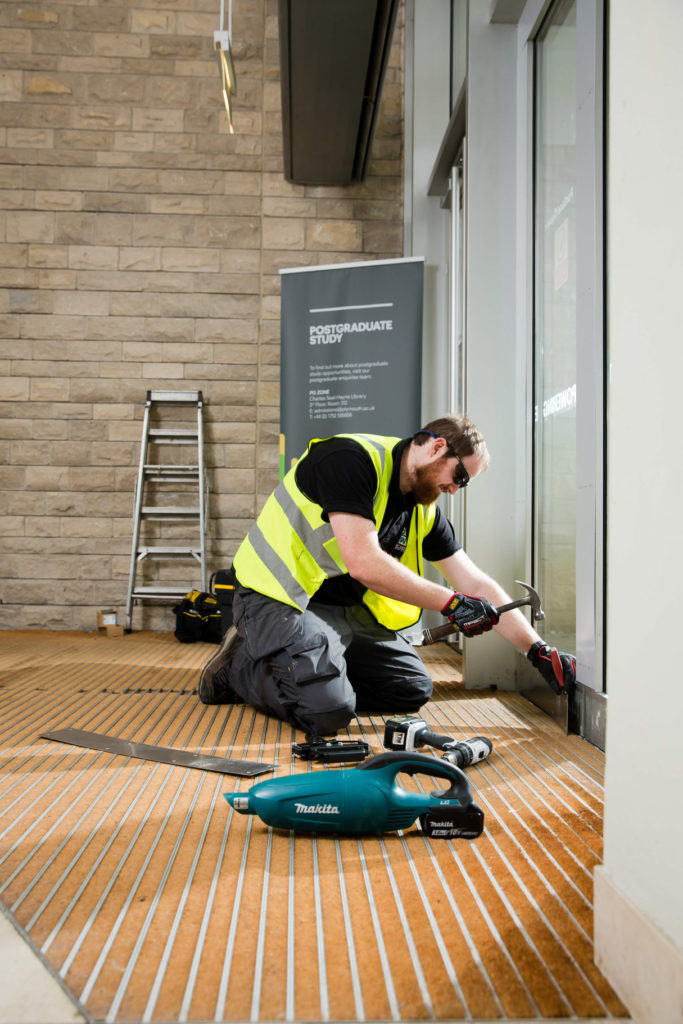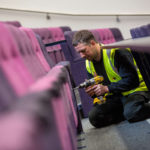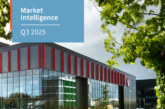Chris Murphy, Head of Operations at leading maintenance, compliance and decarbonisation contractor, Novus Property Solutions, discusses the difficulties that come with carrying out maintenance works in public buildings, and some of the key ways to overcome them.
Local authorities and other government bodies have a responsibility to ensure all public buildings comply with the latest health and safety regulations. Maintenance — both planned and reactive — plays a vital role in keeping schools, hospitals and other buildings safe for both staff and end users.
Regular maintenance works are particularly important for public buildings due to their high traffic nature, which contributes to rapid wear and tear. With this in mind, regular planned maintenance offers the most cost-effective solution for keeping public buildings safe — reducing the need for urgent reactive maintenance works. But with any type of maintenance work in public buildings comes unique challenges.
Carrying out maintenance works in public buildings often means working in live environments, which presents a series of unique challenges. Each type of public building — from schools and hospitals to museums and leisure centres — operates differently, meaning there’s no one-size-fits-all approach when it comes to practical considerations. For example, regular maintenance works in schools can be planned for outside of term-time, whereas hospitals operate on a 24-hour, 365-day schedule so whether the maintenance work is planned or reactive, staff and patients must be considered as a priority.
Three key steps
While each type of public building presents its own unique considerations, there are three key steps that can be applied to carrying out maintenance works in any live environment: planning, infection control, and minimising disruption.
Planning
Forming a robust plan for scheduled maintenance projects is the best way to overcome the unique challenges of working in public buildings. Local authorities should collaborate with staff in public buildings as well as the chosen contractor to ensure works can be carried out safely, cost-effectively and with minimal impact on users. While reactive maintenance works cannot be predicted, it’s important to have some plans in place for if and when issues arise. Having a general plan for how a particular public building would operate should reactive maintenance be required will save time and hassle in the future.
 Infection control
Infection control
While infection control in public buildings — particularly while contractors are on site — has always been a priority, this is more important than ever as local authorities continue to plan for a postpandemic future.
Taking steps to prevent and control the spread of infection should be a priority for any public building maintenance project, where live environments mean staff and service users are more likely to come into contact with contractors. This is particularly important in settings such as hospitals, where patients may be even more vulnerable to infection. Fortunately, there are several relatively easy measures that can be implemented for both planned and reactive maintenance projects.
While dust is inevitable with any type of maintenance and construction work, contractors can take steps to minimise how much is produced. From regular housekeeping and restricted access to negative-pressure ventilation and covering vents, there are a number of measures that can be taken to keep levels of dust on site to a minimum.
The correct disposal of waste is also key to infection control in public buildings. Debris should be removed regularly from construction zones in airtight containers, ideally when the building is closed to the public. Where this is not possible, such as in hospitals, waste management schedules can be implemented so that contractors and staff can work together to reduce the risk of contact between service users and debris.
What’s more, it’s important not to forget the value of social distancing. Creating physical space between contractors and both staff and service users wherever possible is one of the best ways to reduce the potential spread of infection. Not only does this create a safer environment for potentially vulnerable service users but also for on-site maintenance teams who, if they become ill, could delay the works being completed.
Minimising disruption
Infection control goes hand-in-hand with minimising disruption. By choosing to operate at times where public buildings are unoccupied, the risk of spreading infection is lowered too. For example, maintenance works in schools is often noisy and requires temporary classroom moves for students, so planning maintenance to take place outside of term is ideal as it not only minimises disruption but also prevents contact with contractors — reducing the risk of spreading infection.
Where this is not possible there are still ways to minimise disruption to service users, from implementing noise reduction measures to communicating with users before and during the works. It’s also always worth asking the chosen contractor what extra measures they can take to minimise disruption. Specialist maintenance contractors like Novus are able to provide added services such as mobile units as temporary spaces, which can be utilised by staff and service users who will be most affected.
A partnered approach
All of these steps are easiest to implement in collaboration with the chosen contractor. Public buildings such as schools and hospitals often require a higher level of communication and flexibility between local authority and contractor, so it’s important to choose a trusted contractor for any maintenance work in these settings. Treating the contractor relationship as a partnership rather than simply as an external company ensures work will be completed to the highest standards with minimal disruption to staff and service users.










